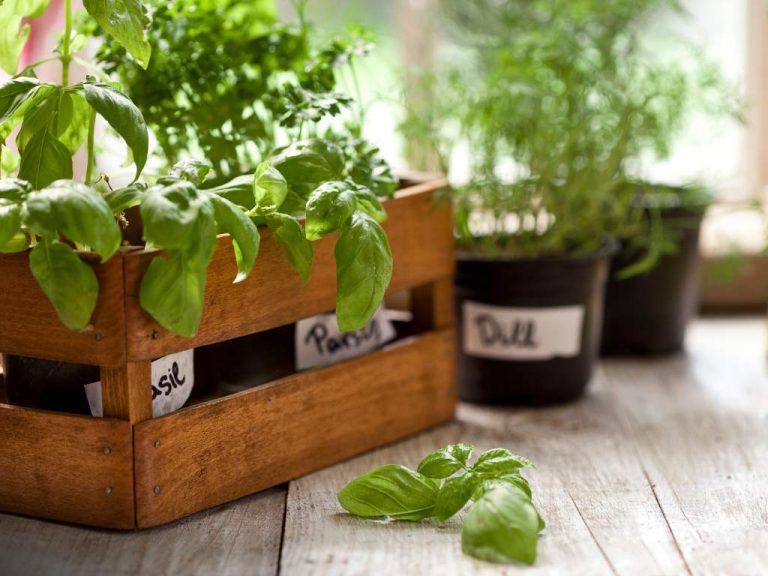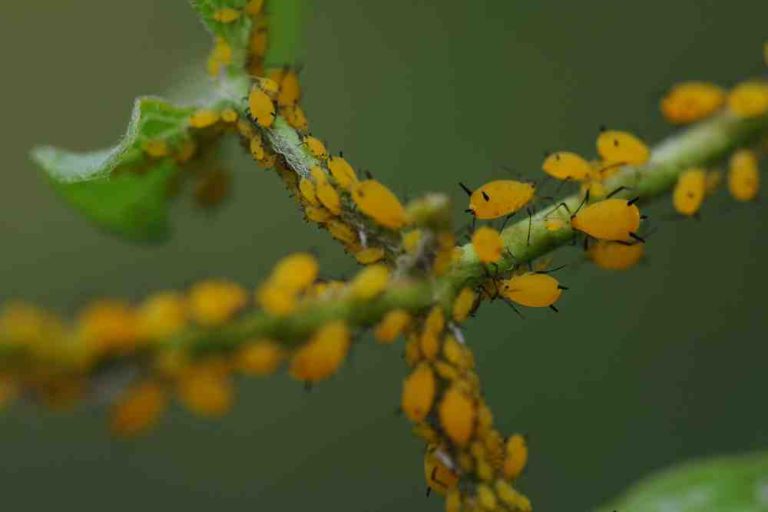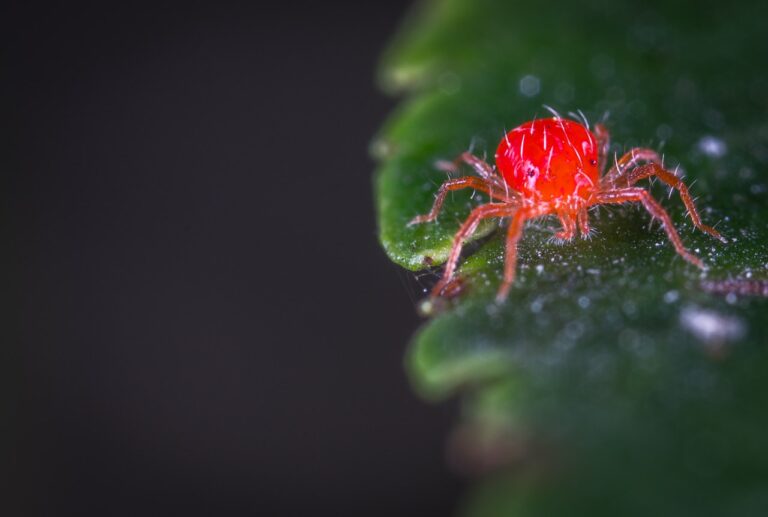Why Are My Basil Leaves Turning Brown? Common Causes and Solutions
Basil is an aromatic and flavorful plant that grows easily but can be sensitive to unexpected environmental changes. Why are my Basil Leaves Turning Brown? If you are concerned about your basil plant, there is no need to panic because in this article we will explain to readers why basil leaves turn brown and how to treat them or solve this issue with the aid of causes and Solutions.
9 Reasons Why Are My Basil Leaves Turning Brown & How to Fix It
1. Overwatering
Watering problems are the most typical problems that gardeners encounter. Basil is extremely picky about how much water it gets, and overwatering is the worse of the two options. Your plant will not only start to have browning or yellowing leaves but also start to experience root rot.
Hopefully, you’ll be able to identify the problem before it becomes this serious because once a plant has root rot, there’s not much you can do. A major problem with indoor plants is overwatering. People who are new to gardening often believe that each plant needs to be watered daily. When basil plants are grown outside, even if it rains heavily, an excellent drainage system known will help transfer the water away from the plants.
Plants that are grown inside simply sit in water and risk developing root rot. Plant roots require oxygen to survive. If submerged in soil, they will drown and be unable to obtain it. Basil needs oxygen. Additionally, fusarium wilt and downy mildew can grow in soil that is very moist and left unattended for an extended period of time.
How do you solve it?
If you found the problem before root rot has taken hold, that’s fantastic! All you have to do now is replant your basil in a pot with plenty of drainage holes and well-draining soil. Because evaporation occurs more slowly indoors, basil plants frequently need to be overwatered more frequently. Check your roots frequently, and if the soil is still wet, don’t water your plant; wait a few days before you water it again.
2. Underwatering
Basil requires water to survive, just like any other plant. The basil plant will suffer if the soil is left to dry up, and the leaves will start to curl, shrink, and turn brown. When a plant is exposed to intense sunlight, such as when it sits on a warm windowsill, water is very crucial. When basil plants are immersed, their leaves can become bitter and unpleasant. When it comes to browning basil, underwatering is by far the easier problem to solve.
Simply giving basil the right amount of water and removing any browned leaves will make it more content. Basil leaves will warn you by turning yellow, brown, shrinking, or curling if left out to dry for an extended period. This is particularly typical if the basil plant is located in an area that receives a lot of sunshine.
How do you solve it?
Put it in the right spot to fix it. A gardener may not always be aware of the ideal location for a plant. Sometimes there is no other option except to try and fail. However, getting enough light exposure is the most effective approach to prevent underwatering.
If you reside in a more temperate climate, your basil plant will thrive with direct sunshine for the majority of the day (4-6 hours). To prevent leaf scorching if you live in a hot climate, place your plant in a spot with some partial shade.
Basil is easy to grow inside because it thrives in a south-facing window. If this happens frequently, the basil plant’s leaves will brown because they are too close to the window, which might be problematic. Another suggestion is to have a tight watering schedule. Underwatering is always preferable to overwatering, so just be careful and check the moisture content of the soil regularly.
3. Inadequate Light
Because basil is a leafy plant, it can become brown if not given enough light. As a result, keep your basil plants away from direct sunlight and add some lush green shade trees or palms to help block out part of the sunshine.
If you’re growing basil inside or in a container, make sure it gets full daylight for at least 12 hours each day. To save electricity, you might choose to place your container in an area that receives some indirect sunlight.
You only need to move your plant to cure it! You must move your herbs to a location that receives more or less sunlight if you’re growing them outdoors. The location of your property will enable you to determine this.
Basil plants should be placed in windows that face south if grown indoors. To get the correct amount of sun exposure if you don’t have a window like that, you might need to buy a grow light. Just keep in mind that immature basil seedlings require less sunlight than mature plants do.
It could be time to consider indoor grow lights if you reside in a location where your basil simply cannot receive enough light during the day. You can control how much sunlight your plants receive using these. Try using a 20–40% shade cloth to help keep some of the heat off of your plants if they are outdoors and receiving too much sun and heat. Eliminate basil leaves that have become yellow or brown.
4. Pests
Basil plants are extremely tough plants and insects, so it is uncommon to see pests on the leaves, but they could provide food for other animals. Aphids, spider mites, thrips, scales, beetles, and other insects typically harm the basil leaves.

These insects feed on the sap of basil leaves, which causes the leaves to seem lifeless and drab and eventually turn brown. Pests can damage the basil leaves on both their upper and lower surfaces. The appearance of yellow stripes or leaves is another sign that pests and insects are attacking a crop.
- Scales: These insects, which have hard outer shells, typically attack the stem and leaves of basil. The dryness and damaged leaf layers cause them to suck sap from the leaves and stems, leaving brown stains.
- Aphids: The underside of the basil leaf is frequently home to these tiny insects. The upper side of the leaves may not be harmed, but they could start feeding on the underside, resulting in brown spots. They come in a variety of colors, including white and green. Yellowing leaves and dropping leaves are further indicators of aphid infestation.
- Leaf Miners: These insects are easily identified by their feeding tracks. They go around eating plants and leaving behind their maze-like tails. You probably won’t see them when they’re feeding since they hide beneath the outermost basil leaves.
- Spider Mites: During the spring and summer, these small, black insects enjoy the hot, humid weather. They enjoy eating basil leaf undersides just like aphids do. Place a white bond paper beneath a basil leaf that has spider mites and shake it a few times to determine if you have a problem. You have a spider mite infestation if you notice little black insects. However, as the cold season approaches, spider mite infection typically decreases.
How do you solve it?
Being vigilant is the best defense against pests. Always look for these bothersome little pests on your basil leaves’ upper and lower sides. Insecticidal soap is another option to get rid of and prevent them.
There is also the option to grow basil indoors if pests are a concern. These common pests won’t be able to get to your basil plants if you grow them indoors. This is why you should check a plant before bringing it inside to make sure it doesn’t have any pests so they won’t spread to your other home plants.
On the leaves, mist some organic insecticide. You can use various special soaps that will destroy them. To get rid of these pests, use a variety of large insects, such as ladybugs and wasps, which eat the little offenders. Keep an eye out for discoloration or yellow spots on the leaves by examining them daily.
5. Diseases
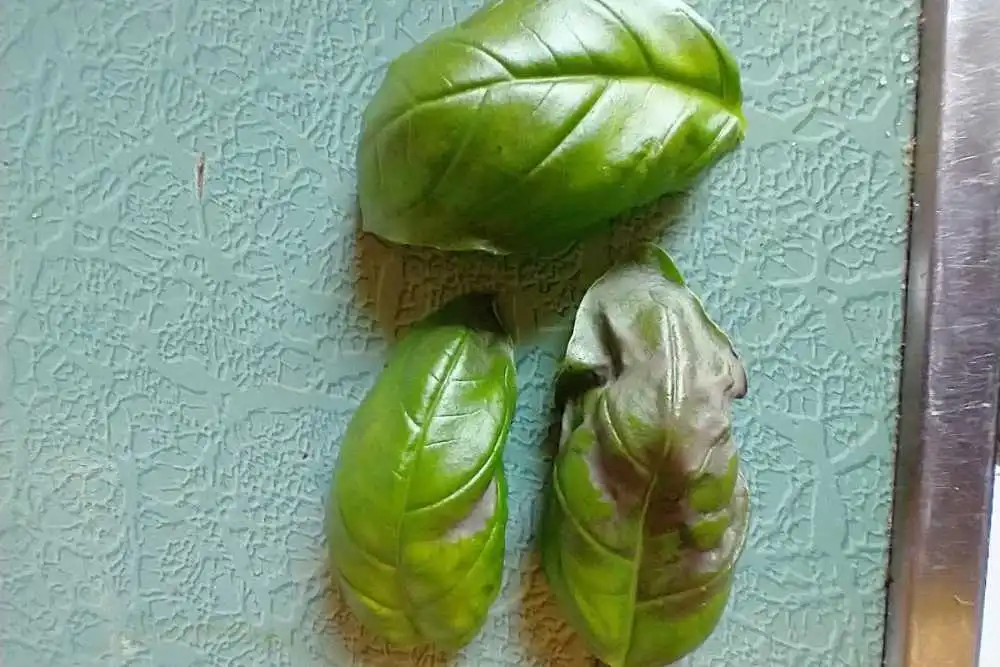
Pest infestations can occasionally harm your basil plants in two ways by introducing fungus spores. The wind blow may also spread various infections to your priceless basil plants. The following list of typical fungal and bacterial diseases in basil will explain some of the possible causes of browning basil leaves in your garden:
– Downy Mildew
Because the symptoms include yellowing and browning of basil leaves, it is sometimes misdiagnosed as a nutritional deficit. However, if you examine the dark areas closely, you will notice a powdery and spongy residue on them. When the temperature falls below 60°F, basil is more vulnerable to this disease. Neem oil and copper can be used with fungicides to cure downy mildew.
– Verticillium Wilt
A fungus that targets the roots of basil plants. It can gradually result in stunted development and a reduction in the plant’s general health because it cannot absorb enough nutrients from the soil. Additional signs include: drooping leaves leaf yellowing or browning leaves falling off If your basil plant displays these symptoms, the disease has already done too much harm and the plant is beyond saving. You have no choice but to remove it and sanitize the soil after eliminating the fungus that inhabits it.
– Fusarium Wilt
It is a typical fungus that affects sweet basil cultivars. It originates from either a fungus that lives in the soil or from basil plants that have been infected. Fusarium wilt can infect other plants in your garden; sadly, there is no treatment for it.
– Leaf Wilting and Leaf Yellowing
Brown streaks or dots on the stem significantly twisted stem leaf fall To prevent your other plants from contracting the illness, you must remove any basil that has the disease right away. If you have diseased basil that has been put in the ground, you must wait two to three years before growing any other plants on it.
– Cercospora Leaf Spot
Brown and black dots with a white or lighter spot in the center are common symptoms of this fungus disease. The organism that causes it, Cercospora ocimicola, is primarily found in sweet basil. The soil might serve as an overwintering place for this fungal disease, which flourishes in a humid environment.
Contaminated things, wind, and water splashes can transmit their spores. Prevention is usually the greatest defense when it comes to fungi-related diseases. When the disease has spread to other sections of the basil and caused plant health deterioration, the odds of reviving your basil are limited.
– Leaf Stem Rot
Fusarium and Verticillium, two distinct fungi, are responsible for this illness. Around midseason, the leaf stems soften and collapse as a result of the fungus’ attack on the pith. In hot or excessively damp situations, it is a prevalent issue. Avoid overhead watering as much as you can to help the plant’s stress level and keep the leaves dry until they can be spread out evenly to dry in the sun.
– Bacterial Leaf Spots
A bacterial leaf spot infection is most likely present if the leaves appear to have water-soaked brown and black spots on the stems and leaves. There will be tiny veins between the leaf dots, which may appear angular or uneven. Pseudomonas cichorii bacterium frequently comes from infected seeds or transplants. It prefers humid conditions and water splashing from overhead irrigation.
Removing and discarding basil plants that exhibit Bacterial Leaf Spots is advisable. However, it is much simpler to apply preventative measures for future basil plants than it is to try to salvage the ones you already have. A diluted neem solution spray may help avoid infection of other plants.
It has been demonstrated that using simple sanitation procedures in the garden can prevent bacterial leaf spots. Basil leaves shouldn’t get wet from irrigation, therefore use drip irrigation or soaker hoses. Maintain adequate distances and airflow. Never store basil crop residue for the winter in the greenhouse or garden.
How do you solve it?
To avoid fungal diseases from turning basil leaves brown, follow these plant care instructions:
- Basil shouldn’t be overwatered since wet leaves and stems and soggy soil promotes fungus growth.
- For optimum air circulation, space your basil plants enough apart. 12 to 24 inches is the recommended space between each plant.
- Always clean your gardening tools before and after use to avoid unintentional transmission of pathogens and spores of fungus illnesses.
- Avoid overhead irrigation, particularly while growing herb kinds in your yard.
Like other serious fungal diseases, bacterial leaf spots cannot be cured.
- Infected plant portions must be removed as soon as you can to stop the spores from spreading.
6. Sudden Temperature Fluctuations
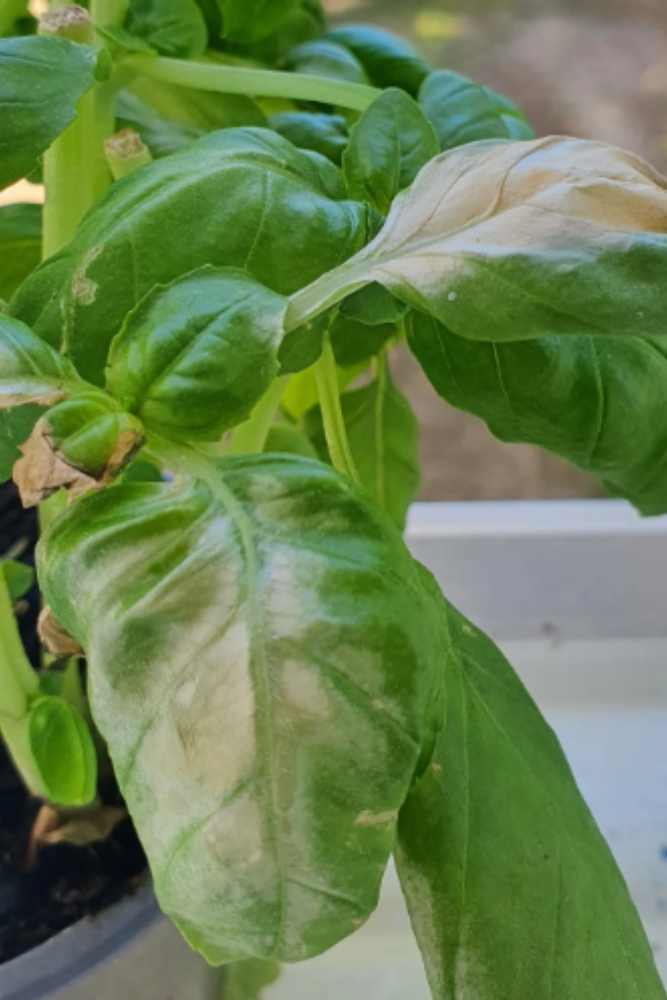
Basil plants are significantly impacted by frost and cold weather. When plants tolerate too low temperatures for an extended period, their leaves become brown. Basil plants are tropical plants that thrive in warm climates, especially mature basil plants. The basil plants are harmed if the temperature falls below 50 F. Additionally, basil plants can be harmed by exceptionally hot temperatures, as well as by the strong midday sun.
How do you solve it?
You can bring them inside. If a plant is in a pot, move it to a shaded area from the afternoon sun. Ensure that the soil is kept warm throughout the night.
7. Root boundness
Your basil plant’s color change could also be caused by root boundness! Basil plants require a lot of area for their enormous and remarkable root systems to spread out. Basil roots penetrate the ground rather deeply, about as far as the plant’s height, and if it is placed in a container or pot that is too small, roots will begin to emerge from the drainage holes.
The leaves could become discolored if your container is too tiny. A basil plant has a huge root system that requires room; if it is crowded, it may suffocate itself by growing in circles.
If you notice this is a problem for your plant in time, you can repot it into a larger container. Carefully remove your basil plant from its present pot and repotted it into a bigger pot. There is no need to loosen the roots excessively since this can frequently cause more harm than benefit. Fresh roots will quickly emerge in the larger volume of soil in the new container.
How do you solve it?
- Find the appropriate pot to fix it. Because basil plants have roots that are as deep as they are tall, your pot probably needs to be tall and narrow.
- This kind of container is ideal for basil, preferably with multiple drainage holes rather than a single drainage hole.
8. Fertilizer
Basil requires only a little fertilizer. They thrive on typical soil that isn’t extremely nutrient-rich. For a healthy basil plant, the pH of the soil should range from slightly acidic to neutral. When basil plants receive too much nitrogen and have acidic soil, the fragile leaves will turn yellow. In addition to this, other symptoms in such circumstances include wilting and scorched leaves.
How do you solve it?
- Stop feeding the basil plants too much. Feed them after two months or once each month.
9. replanting shock
The shock of replanting can harm basil plants. When they are transplanted too often, the plant exhibits stunted growth and brown, dull, dead leaves. The plant will thrive in a pot as it adapts to its new surroundings. The plant will produce fewer healthy leaves if you continuously alter its environment.
In general, plants need to adapt to their new surroundings much like humans do. It’s only normal to observe the following indicators of the adjustment stage if you repotted a plant or placed it in a new environment: slower growth, wilting brown or yellow leaves
Give the basil plants a few weeks to get used to their new surroundings before continuing to care for them with sunlight, water, fertilizer, and affection. You’ll notice the light and feel alive again after it becomes accustomed to its new soil. You will develop patience and tenacity if gardening is one lesson you learn.
How do you solve it?
Make a wise choice while selecting a pot, and avoid frequent pot changes. Basil leaves can turn brown for numerous causes, not all of which should be taken seriously. Just keep in mind to water it frequently (but not too much), keep an eye out for any potential pests, keep it out of direct sunlight, and fertilize your plant carefully, and you’ll soon have a flourishing basil plant growing in your kitchen.
- 29 Bucket Gardening Ideas for a Lush, Compact Garden - October 30, 2024
- 20+ Chic Boho Bedroom Ideas for a Cozy and Stylish Retreat - June 20, 2024
- 12+ Modern Boho Living Room Ideas to Create a Unique Oasis - June 10, 2024


